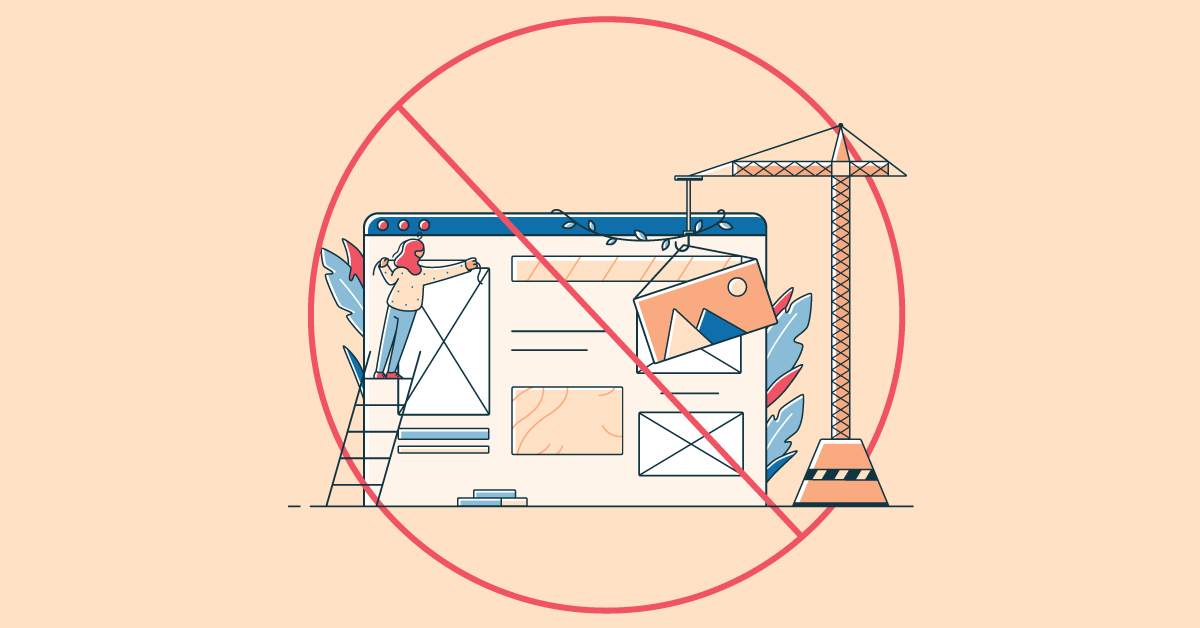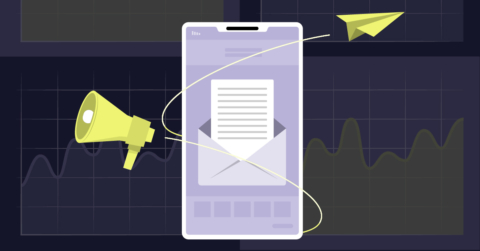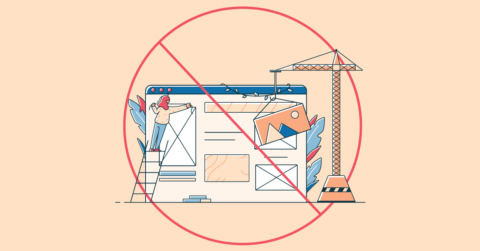
10 Common Website Design Mistakes + Solutions
10/04/24
digital design
Your website is often the first impression people have of your business. Because of that, how you design it is one of the most important decisions you can make.
Today we are covering ten of the most common website design mistakes. We also give you a solution for each one so you can ensure a quality experience for your site visitors.
Let’s get started!
10 Website Design Mistakes + Solutions
1) Cluttered Layout
A cluttered website layout with too many elements can overwhelm visitors. This makes it difficult for them to focus on what’s important. The result? Confusion and frustration, causing website visitors to leave your site quickly.
The Solution:
Embrace simplicity in your design. An effective website is an easy-to-use website. Try using white space strategically. This has the effect of separating different elements and results in a clean and organized layout. You should also focus on one primary call-to-action (CTA) per page, and ensure that it stands out clearly.
2) Slow Loading Times
A slow-loading website is one that drives people away. The fact is, you only have a few seconds before visitors go elsewhere. Anything longer and your bounce rates go up. This leads to shorter visits, less actions taken on your site, and less chance to drive people to action.
The Solution:
There are a number of things you can do to speed up your website. Here are just a few actions that will get you results fast:
- Compress images
- Enabling browser caching
- Avoid using large files
You should also regularly monitor your site’s speed. To do this, you can use tools like Google PageSpeed Insights or GTmetrix.
3) Poor Mobile Optimization
In 2024, over 60% of web traffic comes from mobile devices. In the coming years, that will only increase. A website that isn’t mobile-friendly is a major oversight. If your site is difficult to navigate on a phone, you will alienate a large part of your audience.
The Solution:
A responsive design is key here. You should design your website in a way that adapts seamlessly to different screen sizes and devices. One simple thing that will pay dividends is simply checking out your site on your own phone. This can go a long way towards designing it in a way that is enjoyable for your entire audience. For more specific advice, check out our guide to mobile optimization.
4) Lack of Clear Navigation
Your site visitors need to know exactly how to do what they want to do. This is where your site navigation comes in. Like many website design mistakes, unclear navigation will drive people away.
The Solution:
Design a straightforward, intuitive navigation menu. This will allow users to find key pages easily. You should also use clear labels for menu items. This not only shows your audience exactly what action they need to take, but keeps them on your site longer. This is essential for a profitable website.
5) Overuse of Pop-Ups
Pop-ups are an extremely effective method for lead generation. That said, they can be overused. Too many popups (or popups that don’t add value to your site visitors) will decrease the quality of a visit to your site. This is a quick path to driving people away.
The Solution:
The solution isn’t to stop using popups. Like we said, when used correctly, they can be quite effective for generating leads. Instead, your popups should be used only sparingly. Don’t put them on every single page. They should also serve a clear purpose. This will keep your site visitors happy and engaged.
6) Inconsistent Branding
This is is one of most common website design mistakes. Inconsistent branding can mean a number of things. Here, we mean inconsistency with things like fonts, colors, or overall tone of voice. These can confuse visitors and weaken your brand identity. At worst, it also risks making your business look unprofessional or disjointed.
The Solution:
Establish a brand style guide. This will help you and your team stay consistent with your color palette, typography, and imagery style. You should also remember to prominently display your logo on most of your site pages. This establishes a kind of visual consistency with site visitors.
7) Lack Of Accessibility
Ideally, your website should be accessible to all users. This includes people with disabilities or that otherwise have difficulties accessing your content. Fail here and you are not only limiting your audience, but may even violate legal requirements in some regions.
The Solution:
The most important thing here is to follow web accessibility guidelines. These include Web Content Accessibility Guidelines, or WCAG. For quick wins, here are a few things that can make your site more accessible to all:
- Use alt text for images
- Ensure your site can be navigated via keyboard
- Provide captions for video content
8) Excessive Use of Flashy Elements
You want to get peoples’ attention. This is a fundamental aspect of marketing. That said, overly flashy elements can slow down your website. In addition, used incorrectly, they can also distract users from your main content. These can have adverse effects on the effectiveness of your site.
The Solution:
Prioritize functionality and user experience over flashy design features. That’s not to say animations or interactive elements should never be used. But if you are going to use them, make sure they serve a purpose. Also, be careful about slowing down your website. This is a common knock-on effect of this website design mistake.
9) Ignoring SEO Best Practices
You can have a beautiful website that works great. But if it’s not optimized for SEO? Its value to your organization will be minimal. You will get far less traffic than you otherwise would, and potential customers or clients might never find your site.
The Solution:
Incorporate SEO best practices into your website design straight from the start. This is clearly a huge topic, but there are a few actions you should prioritize immediately:
- Optimize meta tags
- Use keyword-rich headings (without “keyword stuffing”)
- Make your site’s architecture easy for search engines to crawl
10) Weak Call-to-Action (CTA) Buttons
You need to guide your website visitors. What are the different things they can do on your site, and which buttons do they need to click to achieve that action? Fail here and you fail to move your website visitors to the next logical step.
The Solution:
Design CTA buttons that stand out visually. This helps you to clearly convey the action you want users to take. You should also use action-oriented language. This can include anything from “Sign Up Now” or “Get Started” to “Contact Us Today.”
…
Are you an enterprise, nonprofit or small business looking for help on your website? Give us a shout! We provide a free consultation. Email us at info@lughstudio.com or call us at (718) 855-1919!









